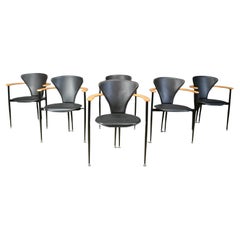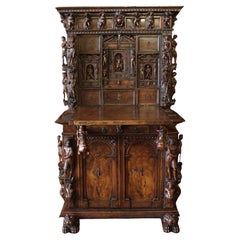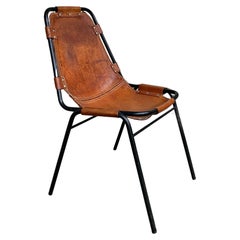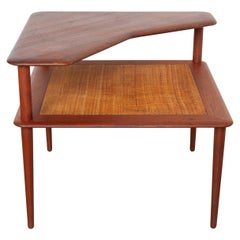Belgium - Furniture
to
1,420
508,199
446,048
16,954
3,121
348
6,295
1,358
1,083
918
644
361
248
199
188
188
150
128
111
108
105
79
47
42
1,170
1,750
14,034
3,469
1,266
7,821
3,952
189
75
301
629
253
1,283
2,427
2,544
733
233
8,232
6,978
3,545
2,820
2,574
17,788
4,521
4,225
4,098
1,117
20,423
18,202
18,451
272
233
183
136
118
Item Ships From: Belgium
Vintage leather armchairs by Arrben Italy, 1980s - set of 6
By Arrben
Located in Leuven, Vlaams Gewest
Set of 6 italian dining chairs consisting of black metal frames with black leather backrests and seats and beautiful wooden armrests.
Cool design with curved metal legs.
Good condi...
Category
1980s Italian Post-Modern Vintage Belgium - Furniture
Materials
Metal
Genoese Cabinet Called Stipo From The Renaissance Period In Walnut - 16th Centur
Located in Brussels, Brussels
Exceptional Genoese cabinet called stipo "a bambocci" from the Italian Renaissance in walnut from the end of the 16th century with its original base
Museum quality piece
Provenance:...
Category
16th Century Italian Renaissance Antique Belgium - Furniture
Materials
Walnut
Antique Germany Large Pendant with Clear Glass and Opaline
By Siemens
Located in Antwerp, BE
The large antique hanging lamp was designed for Siemens. The lamp is complete original with a nice combination of a clear glass upper shade and a ...
Category
Early 1900s German Bauhaus Antique Belgium - Furniture
Materials
Brass
$1,698 Sale Price
20% Off
Vintage freestanding wall unit / bookcase, France 1960s
Located in Antwerp, BE
Striking and versatile, this freestanding wall unit from the 1960s was sourced in France and embodies the spirit of mid-century design. Crafted from solid green stained ash wood, the...
Category
1960s French Mid-Century Modern Vintage Belgium - Furniture
Materials
Ash
Vintage Les Arcs Dining Chair Selected by Charlotte Perriand patinated Leather
By Steph Simon, Dal Vera, Jean Prouvé, Charlotte Perriand
Located in Vorst, BE
Dining chair commissioned / selected by Charlotte Perriand for the interior design of the appartements of 'Les Arcs' Ski Resorts in the French Alps.
Chromed tubular frame in metal p...
Category
Mid-20th Century Italian Mid-Century Modern Belgium - Furniture
Materials
Steel, Chrome
$1,465 Sale Price
20% Off
Coffee Corner Table in Teak and Cane by Peter Hvidt, Denmark, 1955
By Peter Hvidt, France & Daverkosen
Located in Antwerp, BE
Midcentury solid teak corner table with woven rattan shelf. Excellent for use as a side table or sofa table manufactured by France and Sons designer ...
Category
1950s Danish Scandinavian Modern Vintage Belgium - Furniture
Materials
Teak
Pair Seconda Postmodern armchairs by Mario Botta for Alias, 1980s, Set of 2
By Shiro Kuramata, Michele de Lucchi, Philippe Starck, Alias, Mario Botta
Located in Vorst, BE
The Seconda Armchair, designed by Swiss architect Mario Botta and crafted by Alias, is a bold icon of postmodern design.
Launched in 1982, it showcases Botta’s architectural backgro...
Category
Mid-20th Century Italian Post-Modern Belgium - Furniture
Materials
Steel, Sheet Metal
Rare French 16th century oak cabinet with beautiful patina
Located in Meulebeke, BE
France / 16th century / cabinet / oak / Rustic / Mid-century
A rare antique rustic tall cabinet with nice patina on the oak wood. With 2 doors wi...
Category
16th Century French Rustic Antique Belgium - Furniture
Materials
Wrought Iron
Sideboard by Axel Christensen for Aco Furniture, Denmark, 1960s
By Axel Christensen, Aco Møbler
Located in Ranst, VAN
Designed in the 1960s and produced by Axel Christensen Odder (ACO Møbler), this beautifully crafted sideboard features elegant handles, four drawers, and a lot of storage space with ...
Category
Mid-20th Century Danish Scandinavian Modern Belgium - Furniture
Materials
Teak
Contemporary Chair 'Elé' by Ann Demeulemeester, Black Beech (in stock)
By Ann Demeulemeester
Located in Paris, IDF
Dining Chair 'Elé' designed by Ann Demeulemeester for Serax.
Solid beech wood
Stain: Black
The 'Elé' chair by Ann Demeulemeester is a timeless expression of understated elegance a...
Category
21st Century and Contemporary Scandinavian Modern Belgium - Furniture
Materials
Beech
Val Saint Lambert Label Green Crystal Vase Cut to Clear Belgium 1950s
By Val Saint Lambert
Located in Verviers, BE
Val Saint Lambert Label Crystal vase cut to clear,
Beautiful Val Saint Lambert circular Crystal vase, hand-cut-to-clear,
the glass is thick, deeply and evenly cut,
Origin: Belgium ...
Category
1950s Belgian Art Deco Vintage Belgium - Furniture
Materials
Crystal
Pair of Art Deco Armchairs in Solid Wood and Tapisserie 1930s
Located in Meer, VAN
Pair of Art Deco Armchairs in Solid Wood and Tapisserie, 1930s.
This is an incredible museum worthy pair of art deco armchairs in solid wood and tapisserie, made in the 1930s. Most ...
Category
Early 20th Century European Art Deco Belgium - Furniture
Materials
Fabric, Oak
Lidded Ice Bucket in Patinated Brass by Nader 1950s
Located in Meer, VAN
Lidded Ice Bucket in Patinated Brass by Nader 1950s.
Wonderful early to mid 20th century ice bucket with lid made by the renowned Nader factory in Tehran, Iran. Great design with wo...
Category
Mid-20th Century Art Deco Belgium - Furniture
Materials
Brass
Art Deco Moser & Söhne Carlsbad Glass Vase with Relief-Cut Panel
By Moser
Located in Verviers, BE
An Art Deco period etched amber glass vase by Leo Moser.
The flaring rim above a relief-cut panel highlighted in gilt, depicting Amazon warriors above a multi-faceted body.
‘Moser, C...
Category
1930s Czech Art Deco Vintage Belgium - Furniture
Materials
Brass
Vintage dining chairs by Pietro costantini, 1980s, set of 6
By Pietro Costantini
Located in Leuven, Vlaams Gewest
Very chic italian high back dining chairs designed by Pietro Costantini.
Elegant curved lacquered wood backrests and upholstered with black leather.
Stamped under thea seat with '...
Category
1980s Italian Post-Modern Vintage Belgium - Furniture
Materials
Leather, Lacquer
Mannequin of a Young Girl in Black Dress, Shop Display, 1950s
Located in Antwerp, BE
Original shop window display child mannequin for primary school clothing, she wears a black dress as an example for children's uniforms from the 1950s.
Category
1950s Belgian Mid-Century Modern Vintage Belgium - Furniture
Materials
Plaster, Wood, Paint
$1,132 Sale Price
20% Off
Black Lacquered Chinese Jewelry Box Soapstone Brass Chinoiserie
Located in Poperinge, BE
Vintage Chinese jewelry box, chinoiserie jewelry box, made of black lacquered wood, brass details and soapstone image in relief of flower...
Category
Late 20th Century Chinese Chinoiserie Belgium - Furniture
Materials
Soapstone, Brass
Vintage bronze mounted porcelain box hand painted butterflies and floral decor
By Henredon, François Linke
Located in Wommelgem, VAN
Porcelain bronze mounted box, Art Nouveau style
Made of hand-painted crackled, glazed high quality bronze mounted porcelain. Signed on the bottom.
An all over polychrome floral deco...
Category
20th Century Japanese Art Nouveau Belgium - Furniture
Materials
Porcelain
Renaissance-style armour, circa 1880
Located in Honnelles, WHT
Renaissance-style armour, circa 1880
Category
Late 19th Century French Renaissance Antique Belgium - Furniture
Materials
Metal
Art Deco Val Saint Lambert Small Crystal Vase Cut-to-clear, 1950s
By Val Saint Lambert
Located in Verviers, BE
Art Deco Val Saint Lambert Signed Small Crystal Vase Cut-to-clear, 1950s
Beautiful Val Saint-Lambert crystal vases, handcut-to-clear, the glass i...
Category
1950s Belgian Mid-Century Modern Vintage Belgium - Furniture
Materials
Crystal
Vintage 5 pc leather DS46 modular sofa by De Sede, 1970s
By De Sede
Located in Leuven, Vlaams Gewest
Mid century thick Buffalo neck leather sofas by Desede consisting of 5 elements.
Desede stands for pure quality of leather.
This modular sofa has a very thick leather upholstery w...
Category
1970s Italian Mid-Century Modern Vintage Belgium - Furniture
Materials
Leather
19th Century traditional Russian Religious Icon “Full Cycle”
Located in Meulebeke, BE
Russia / 19th century / Religious Icon / oak / Baroque / Antique
Traditional antique Russian Icon from the estate of a collector. Hand painted in tempura on an oak wooden panel in t...
Category
19th Century Russian Baroque Antique Belgium - Furniture
Materials
Oak
Art Deco Desk Lamp Notary Lamp Erpe Model 52 Enamel Shade Green
By Erpé
Located in Poperinge, BE
Iconic art deco desk lamp, also called notary lamp or banker's lamp, made by the Belgian company Erpé, model no. 52, industrial design from the 1920s-30s.
This beautiful lamp is mad...
Category
Early 20th Century Belgian Bauhaus Belgium - Furniture
Materials
Enamel, Iron, Wrought Iron
Polychrome Art Deco Vase Charles Catteau Boch Keramis D2366
By Charles Catteau
Located in Poperinge, BE
Beautiful and rare enamelled art deco vase, designed by the studio of Charles Catteau for Boch Frères, Belgium, circa 1920s, decor number D2366, marked and numbered at the bottom.
T...
Category
Early 20th Century Belgian Art Deco Belgium - Furniture
Materials
Earthenware
Massimo Materassi for Mas Italy coffee set 1984 Memphis Milano
By MAS Italia
Located in Antwerpen, Antwerp
Coffee set by Massimo Materassi designed for MAS Italy in 1984. Materassi graduated in 1979 at the University of Florence, Faculty of Architecture. After a b...
Category
1980s Italian Modern Vintage Belgium - Furniture
Materials
Ceramic
Mid-Century Large Modernist, Mazzega Murano Pendant Lamp, by Carlo Nason, 1960s
By Carlo Nason, Mazzega
Located in Verviers, BE
By Carlo Nason for Mazzega
This carefully made glass lampshade with streaks of green on a glass base and a delicate green edge along the ruffled edge provides the color contrast. The...
Category
1960s Italian Mid-Century Modern Vintage Belgium - Furniture
Materials
Art Glass, Blown Glass
Contemporary Chair 'ALU' by Muller Van Severen x Valerie Objetcs, Red + Curry
By Muller Van Severen, Valerie Objects
Located in Paris, IDF
ALU contemporary chair
by muller van severen
Code: V9016035E
Model: aluminium frame, seat curry, back red
This time Fien Muller and Hannes Van Severen revamped their classic Alu Chair by interchanging the aluminium back and seat with a wooden version made of multilayered oak. The result is staggering: a piece of furniture carrying the playful DNA of Muller Van Severen, yet with a sober, toned-down feel to it. In other words: a visually well-balanced chair that fits in every living room, from classic to contemporary.
The renowned design couple Muller Van Severen designed their alu chair back in 2015 as an outdoor chair for Anne Holtrop...
Category
21st Century and Contemporary Belgian Organic Modern Belgium - Furniture
Materials
Aluminum
Large Color Litho Leon Danchin Hunting Dog Spaniel 68x55cm
By Leon Danchin
Located in Poperinge, BE
Two Cocker Spaniels is an original color print, lithograph in color in a dark wooden frame with glass, work by the famous French sports artist Leon Danchin (1887-1938), signed in pen...
Category
1940s French Vintage Belgium - Furniture
Materials
Glass, Oak, Paper
Florence Knoll Coffee / Side Table with Laminate Top And Stainless Steel Base
By Florence Knoll
Located in Antwerpen, Antwerp
Early Florence Knoll T-angle side table, produced by Knoll in 1952. The table has a original white laminate top and a stainless steel base. A nice example of classic modernist design...
Category
1950s Unknown Mid-Century Modern Vintage Belgium - Furniture
Materials
Stainless Steel
Daybed by Jacques Adnet
By Jacques Adnet, Compagnie Des Arts Français
Located in Uccle, BE
Daybed with a steel structure entirely covered in black saddle-stitched leather by Jacques Adnet, Compagnie des Arts Français.
The side elements constructed by five uprights.
The two...
Category
Mid-20th Century French Mid-Century Modern Belgium - Furniture
Materials
Brass
$19,458
Contemporary Hanging Lamp N°5 by Muller Van Severen x Valerie Objects, Green
By Valerie Objects, Muller Van Severen
Located in Paris, IDF
Hanging Lamp N°4 by Muller Van Severen x Valerie Objects
Dimensions: L. 90 W. 25 H. 180 CM
Finish: Green
Specifications:
— light source: 4W led
— colour tempertaure: K2700
— lumen...
Category
21st Century and Contemporary Belgian Organic Modern Belgium - Furniture
Materials
Steel
Crystal Set of 6 Knittel with Label Stem Glasses with Overlay Cut to Clear
By Nachtmann
Located in Verviers, BE
Vintage with Label Knittel set of 6 cut to clear crystal stem glasses.
Mix crystal (Bleikristall 24% Mundgeblasen Handgeschliffen) glasses
Clear demi crystal glass. Side facetted an...
Category
1950s German Mid-Century Modern Vintage Belgium - Furniture
Materials
Crystal
José Zanine Caldas Namoradeira Rocker Chair
By José Zanine Caldas
Located in Ghent, BE
Designed by José Zanine Caldas in the 1950s, the iconic Namoradeira features simple, elegant lines that seamlessly blend modern design with traditional craftsmanship.
Sculpted from...
Category
1970s Brazilian Mid-Century Modern Vintage Belgium - Furniture
Materials
Wood
Oval Mid-Century Chandelier in Brass, Crystal and Opaline Glass – 1970s
Located in Antwerp, BE
Oval Mid-Century Chandelier in Brass, Crystal and Opaline Glass – 1970s
Elegant oval chandelier from the 1970s, crafted from brass with shimmering crystal accents and a central opal...
Category
20th Century Italian Hollywood Regency Belgium - Furniture
Materials
Crystal, Brass
Children Steiff Large Plush Turtle Toy with Glass Button Eyes 1960s and Wheels
By Steiff
Located in Antwerp, BE
A original Steiff Turtle "sit on" and "pull toy," circa 1950s. Has original pull chord and original rubber wheels with red painted sides; original bar over the top. All original pain...
Category
1950s German Mid-Century Modern Vintage Belgium - Furniture
Materials
Metal
$849 Sale Price
20% Off
Commode by Claire Bataille and Paul ibens, 1966
By Claire Bataille and Paul Ibens
Located in Vlimmeren, BE
This beautiful cabinet was designed by Claire Bataille and Paul ibens in 1966, for private use.
In 1968 it came in production by ‘t Spectrum and it was only produced until 1974.
This...
Category
1960s Belgian Modern Vintage Belgium - Furniture
Materials
Wood
Forest green metal Military filing Cabinet or Chest of Drawers, 1956
Located in Meulebeke, BE
Germany / 1956 / military chest of drawers / metal / industrial / Mid-Century / Vintage
Military filing cabinet / chest of drawers made in for...
Category
1950s German Industrial Vintage Belgium - Furniture
Materials
Metal
Mid century low wooden bench, France ca. 1850
Located in Meulebeke, BE
France / 1850 / bench / wood / rustic / mid century
Beautiful rustic small low bench crafted in solid wood in France around 1850. On the elegant legs and with nice patina on the woo...
Category
1850s French Mid-Century Modern Antique Belgium - Furniture
Materials
Wood
Mexican Modern Lounge Chair, Wood and Leather, 1960's
By Don S. Shoemaker
Located in Uccle, BE
This is the Sloucher chair made in the 1960's. Leather has been restored. Made of Cocobolo Rosewood.
Don S. Shoemaker (1919 - 1990) was born in Nebraska and studied at the Art Inst...
Category
Mid-20th Century Mexican Mid-Century Modern Belgium - Furniture
Materials
Leather, Cocobolo
On the Rocks Sofa by Francesco Binfaré for Edra, Italy, 2004
By Edra, Francesco Binfaré
Located in Antwerp, BE
Designed by Francesco Binfaré for Edra in 2004, On the Rocks is a bold, sculptural sectional sofa made up of three seating elements and one large, freely positioned backrest. With no...
Category
Early 2000s Italian Mid-Century Modern Belgium - Furniture
Materials
Fabric
Art Deco Italian Ceramic Animal Figurine Macaw Parrot Porcelain Bird Figure
By Guido Cacciapuoti, Capodimonte
Located in Wommelgem, VAN
Art Deco tall Italian animal Figurine Ceramic Parrot Macaw on a tree trunk
Material: porcelain, ceramic, tin glazed
Design: Cacciapuoti style...
Category
Mid-20th Century Italian Baroque Belgium - Furniture
Materials
Ceramic, Majolica, Porcelain
Antique French Tramp Art Box Knick-knack Trinket Jewelry Case Folk Art Collector
Located in Poperinge, BE
Antique tramp art box, jewelry box or trinket box, called a trinket box, lined with wallpaper, made in France around 1900.
A beautiful form of folk art, anyone could make a tramp ar...
Category
Early 20th Century French Art Nouveau Belgium - Furniture
Materials
Brass
Set of 6 Alfred Hendrickx Dining Chairs S4
By Belform, Alfred Hendrickx
Located in Vlimmeren, BE
Beautiful set of 6 Alfred Hendrickx S4 dining chairs from 1955. These elegant chairs were designed for Belform. They show Hendrickx’s elegant craftsmanship and taste for design. The ...
Category
1950s Belgian Mid-Century Modern Vintage Belgium - Furniture
Materials
Wood
$2,759 / set
Sigurd Ressell Pair of Falcon Lounge Chairs in Leather, Canvas and Birch 1970s
By Sigurd Ressell, Vatne Møbler
Located in Meer, VAN
Sigurd Ressell Pair of Falcon Lounge Chairs in Leather, Canvas and Birch for Vatne Møbler Norway 1970s
This is a very elegant and comfortable pair of Falcon lounge chairs by Sigurd ...
Category
Late 20th Century Norwegian Mid-Century Modern Belgium - Furniture
Materials
Leather, Canvas, Birch
Single ceiling light by Massimo Vignelli - Venini Murano
By Venini, Massimo Vignelli
Located in Uccle, BE
Single ceiling light by Massimo Vignelli, Venini, Murano, Italy (founded in 1921).
Cigar-shaped in clear sandblasted glass decorated with multi-colored bands.
Referenced in the Venin...
Category
Mid-20th Century Italian Mid-Century Modern Belgium - Furniture
Materials
Blown Glass
Val Saint Lambert, Sculpted Heavy Crystal Vase , Belgium 1950s
By Val Saint Lambert
Located in Verviers, BE
Val Saint Lambert, sculpted crystal vase with amethyst core, Belgium.
Heavy Val Saint Lambert crystal vase catalogued in the 1950s.
The central amethyst color (a traditional favorit...
Category
1950s Belgian Mid-Century Modern Vintage Belgium - Furniture
Materials
Crystal
Exclusive Pair Of Biosca Armchairs 1950's
By BIOSCA
Located in Nijlen, BE
Exclusive set of 2 Spanish armchairs from Biosca. Completely original and the saddle leather has a beautiful used look. Wooden frame is ebonized.
Warm minimalism...
Category
1950s Spanish Minimalist Vintage Belgium - Furniture
Materials
Leather, Pine
$2,653 / set
Modular Storage Set by Georges Coslin for UP Collezioni Longato, Italy 1960's
By Collezioni Longato
Located in Oud-Turnhout, VAN
Vintage Midcentury Modern Italian Design Modular Storage Set by Georges Coslin for UP Collezioni Longato. Made in Italy, 1960's period. Hard colored plastic storage unit in red and g...
Category
1960s Italian Mid-Century Modern Vintage Belgium - Furniture
Materials
Plastic
$1,509 Sale Price / set
20% Off
Art Deco Vitrine Display Cabinet a Cabinet of Curiosities, Wardrobe or Showcase
Located in Antwerp, BE
A beautiful Art Deco display cabinet from a former Haute Couture Dress store, suitable for hanging long dresses or coats also very effective for exhibiting...
Category
1920s Dutch Art Deco Vintage Belgium - Furniture
Materials
Oak
$8,491 Sale Price / item
20% Off
Mid-Century Modern Bed, Wood and Leather, Italy
Located in Brussels, BE
Mid-Century Modern Bed, Wood and Leather, Italy
Category
Mid-20th Century Italian Mid-Century Modern Belgium - Furniture
Materials
Leather, Wood
Christian Krekels Art Coffee Table in Inlaid Brass and Agate Belgium 1989
By Christian Krekels
Located in Meer, VAN
Christian Krekels Art Coffee Table in Inlaid Brass and Agate, Belgium, 1989.
This is a mesmerizingly beautiful coffee table by Belgian artist Christian Krekels.
Quite exceptional i...
Category
Mid-20th Century Belgian Mid-Century Modern Belgium - Furniture
Materials
Agate, Brass
Crystal Set of 5 Nachtmann Label Stem Glasses with Overlay Cut to Clear
By Nachtmann
Located in Verviers, BE
Vintage set of 5 cut to clear crystal stem glasses.
Mix crystal (Bleikristall 24% Mundgeblasen Handgeschliffen) glasses
Clear demi crystal glass. Side facetted and toothed stem.
Th...
Category
1950s German Mid-Century Modern Vintage Belgium - Furniture
Materials
Crystal
Contemporary Hanging Lamp N°1 by Muller Van Severen x Valerie Objects, Green
By Valerie Objects, Muller Van Severen
Located in Paris, IDF
Hanging Lamp N°1 by Muller Van Severen x Valerie Objects
Dimensions: H. 140 X 183 X 25
Finish: Green
specifications
— light source: 4W led
— colour tempertaure: K2700 — lumen 350
—...
Category
21st Century and Contemporary Belgian Organic Modern Belgium - Furniture
Materials
Steel
Vintage Glass Cake Stand Cake Plateau Flowers Mikasa Calypso
By Mikasa
Located in Poperinge, BE
Beautiful blue and pink glass cake stand, cake plateau with pink flowers in relief, design by Walther Mikasa, model is called Calypso, vintage object from the 80s, West Germany.
Hig...
Category
1980s French Vintage Belgium - Furniture
Materials
Glass
Identical Pair of Mid-Century Dutch Shag Rugs by Desso, 1970s
By Desso
Located in Herentals, BE
A rare pair of identical shag rugs designed by Desso in the Netherlands during the 1970s. Each rug showcases a lush, high-pile surface in layered green tones and soft beige edges — c...
Category
Mid-20th Century Dutch Mid-Century Modern Belgium - Furniture
Materials
Acrylic
Vintage Bronze Wall Sconces Louis XVI Style, Massive Belgium, Gilded Bronze
By Massive Lighting
Located in Bastogne, BE
Magnificent pair of large wall sconces in the Louis XVI style.
Crafted from gilded bronze by Massive of Belgium, these vintage beauties date back to the mid-20th century.
They exud...
Category
1950s Belgian Louis XIV Vintage Belgium - Furniture
Materials
Bronze
Art Deco bronze sculpture male torso France 1930
Located in Antwerp, BE
Art Deco bronze sculpture male torso.
Bronze, dark green patina on a Portor marble base.
France 1930.
Category
1930s Art Deco Vintage Belgium - Furniture
Materials
Marble, Bronze
Neo-Gothic Flemish hand carved panel in solid oak, ca. 1850
Located in Meulebeke, BE
Belgium / 1850 / panel / oak / Neo-Gothic / Antique
Highly decorative 19th century Flemish panel with hand carved Neo-Gothic decorations in oak. The panel consist of four rectangle ...
Category
19th Century Belgian Gothic Revival Antique Belgium - Furniture
Materials
Oak
Arteluce Atomic Space Chrome Disk Lamp Mira "C" Designed by Ezio Didone
By Arteluce, Ezio Didone
Located in Antwerp, BE
Vintage midcentury Arteluce saucer lamp.This Mira C Suspension provides diffused upward and downward light and features aluminum chrome lamp body finish a sandblasted, acid-etched gl...
Category
1980s Italian Mid-Century Modern Vintage Belgium - Furniture
Materials
Aluminum
$1,037 Sale Price / item
20% Off
Modernist Carl Malmsten Mahogany 1940s Mirror, in the Vibe of Axel Einar Hjorth
By Carl Malmsten, Axel Einar Hjorth
Located in Forest, BE
This is an unusual Mahogany mirror produced in Sweden in 1994 by one of the craftsman students of the Malmsten school. Elegant and classic shape. It will brighten any projects. We ju...
Category
1940s Swedish Scandinavian Modern Vintage Belgium - Furniture
Materials
Mirror, Mahogany
$1,698 Sale Price
20% Off





